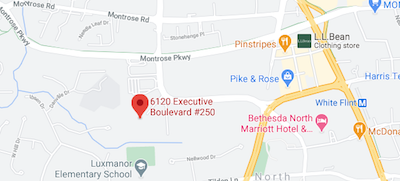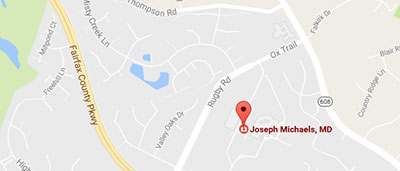A cheek augmentation is a surgical procedure that volumizes and plumps up the contours of the cheek area. As we get older, sagging skin and fat loss can weigh down our appearance and show off our age and wrinkles. With cheek augmentation, you can restore the facial fullness and vitality of your younger self. The three types of cheek augmentation that can accomplish this are cheek implants, fat transfer, and cheek fillers.
Here at Michaels Aesthetic and Reconstructive Plastic Surgery, Dr. Michaels and his staff are committed to patients’ well-being from the time of their consultation appointment all the way to the end of recovery. Dr. Michaels’ involvement with residency training at both Johns Hopkins and Georgetown University Hospital has allowed him the chance to impart the most updated knowledge and techniques in the field of plastic surgery.
If you are interested in cheek augmentation, Dr. Michaels is ready to meet your needs and aesthetic desires. Contact our offices in Rockville, Maryland (301) 468-5991 or Fairfax, Virginia (703) 957-8610 to find out more about the services we offer. We also provide virtual consultations as an option for those who would like to discuss their goals in more detail.
Contents
Cheek Implants
All cheek implants are made of medical-grade soft silicone. Some patients choose malar implants that accentuate the cheekbones. In contrast, submalar implants are designed to fill in hollowness in the cheeks. Combined implants enhance both of these areas at once. All of the above provide permanent results, can easily be removed, are safe for the body, and cannot cause an allergic reaction. (1)
Cheek Implant Benefits
- They are permanent
- They are easy to remove
- They can’t cause an allergic reaction and are completely non-toxic. (1)
- Incisions made are only a few millimeters.
- They require little maintenance or follow-up
Procedure & Recovery
During a cheek implant procedure, Dr. Michaels will first numb the inside of your mouth with local anesthesia. He may also offer the procedure with sedation or general anesthesia for your comfort.
He will then make small incisions just a few millimeters in length in the gumline above your upper teeth. He will form a pocket within the skin to place the implants before suturing them into place securely. Finally, he will place a dressing to be kept on for 2 to 3 days after the procedure. The entire process takes around 1 hour.
If the sutures are resorbable, they will not have to be removed, but non-resorbable sutures will be removed within one to two weeks after the procedure. It’s normal to feel a tight sensation in your cheeks- this should resolve within one week. Although you’ll be able to return to work within a week, you should avoid vigorous exercise for at least 2 weeks. It may take up to 6 weeks for the swelling to completely subside.
Cheek Fillers
Cheek fillers are minimally invasive and injected into the dermis layer of the skin. This layer is where fibroblasts are located- cells that are responsible for creating collagen and other connective tissue proteins. Cheek fillers fall into one of these categories:
- Hyaluronic acid (HA). These fillers boost your hyaluronic acid, a naturally occurring substance in the skin, to reduce wrinkles and improve skin hydration and firmness. (2)
- Polylactic acid (PLLA). This is an effective filler that initiates collagen production as it degrades (2) providing volume and firmness.
- Calcium hydroxylapatite (CaHa). Microscopic spheres of CaHa, a naturally occurring mineral, are distributed by carboxymethylcellulose gel for even distribution and effect throughout the skin. (3)
- Polymethylmethacrylate (PMMA). PMMA microspheres work very similarly to CaHa injections. This treatment has been proven as safe as HA injections. (4)
Fillers with one of these main ingredients may be ideal for the cheek area and are biodegradable and biocompatible. The results can last anywhere from 6 months to 2 years, depending on the injection’s formula and your own unique body chemistry.
Cheek Filler Benefits
- Effective, non-surgical treatment
- Takes less than 20 minutes
- Only requires local anesthesia
- More economical
- No downtime
What is a Cheek Filler Procedure Like?
Most cheek filler procedures take 20 minutes or less due to their minimally-invasive nature. First, Dr. Michaels will apply a numbing cream to your cheeks. He will then inject the dermal filler of your choice mixed with a numbing agent into several areas of your cheeks.
After the injections, he will apply a cold compress to ease the swelling and reduce any bruising. These symptoms may continue for a few days and can be alleviated with cold compresses and OTC medications. You’re likely to see results immediately after the injections, but you won’t notice your final look for at least a couple of weeks.
Fat Transfer to Cheeks
During a cheek fat transfer procedure, fat is removed from another area of your body through liposuction in order to volumize the cheeks or accentuate the cheekbones. After it is processed outside of the body, the purified fat is transferred back into the cheek area. You will begin to see changes within a few weeks, but the final, permanent results will settle in after a few months.
Cheek Fat Transfer Benefits
- Utilizes your own tissue, which is safer. (5)
- Incisions do not require sutures
- Minimal downtime
- Can be used to treat age-related facial volume loss
Cheek Fat Transfer Procedure & Recovery
During a cheek fat transfer, you will have the option to be placed under general anesthesia or local anesthesia with sedation. Dr. Michaels will determine the best “donor site” to remove fat from; usually, this is the abdomen or thighs.
He will then inject tumescent fluid that contains lidocaine and epinephrine into the donor site. Lidocaine numbs the area while epinephrine prevents bleeding. After making a tiny incision at the donor site, he inserts a cannula with a diameter of less than an ⅛ of an inch to suction out fat cells. Dr. Michaels will then make incisions in the cheeks. After the suctioned fat cells are purified, they are placed strategically into the cheeks. Finally, the incisions are covered with gauze and surgical tape.
You will have to wear a compression garment for 1 to 2 days until your follow-up appointment. You should refrain from physical activity and work for at least one week. After this period, swelling and bruising will have reduced significantly.
Which Procedure Should I Choose?
Each type of augmentation has its own set of advantages, so the choice is ultimately up to the patient. Dr. Michaels uses his professional expertise to help you determine what will work best for your vision. Some benefits of cheek augmentation are the same across the board:
- Fuller, younger-looking cheeks
- More defined cheekbones
- Reduction of wrinkles
- Improved cheek volume
- The appearance of a more “lifted” and lively face
- Restored balance to facial proportions
Am I a Good Candidate for Cheek Augmentation?
The ideal candidate lacks volume and definition in the cheek or cheekbone area. In general, patients should be in good health. They should have good control over underlying conditions such as high blood pressure, diabetes, or other conditions that impede healing. Ideally, they should also be a non-smoker, or be willing to quit for at least a few weeks, since nicotine can interfere with wound healing. Cheek fat transfers and cheek implant procedures especially also require that the patient has good quality skin that heals well.
Finally, people with certain autoimmune conditions or bleeding disorders should not undergo a cheek augmentation procedure. Dr. Michaels will thoroughly review the risks associated with all medical conditions at your personal consultation.
Personal Consultation
During a personal consultation, Dr. Michaels will review your medical history and listen carefully to what you envision for your facial appearance. He can further explain the nuances of each of these options and advise you on the pros and cons of each treatment. Where required, he will conduct blood tests to get an idea of your overall health.
Cost of Cheek Augmentation in Washington, D.C.
We will determine the cost of your cheek augmentation procedure according to the specific information in your personalized treatment plan. Dr. Michaels will discuss the best option for your desired outcomes during your personal consultation.
Give us a call at either of our locations: (301) 468-5991 (Rockville, Maryland) or (703) 957-8610 (Fairfax, Virginia). For your convenience, we also offer virtual consultations where you can explain your needs in depth.
FAQ
Which cheek augmentation method is the most cost-effective?
Cheek fillers are the most cost-effective in the short-term. If you would like a long-term solution that doesn’t require maintenance after a year or so, then cheek implants or fat transfer may be more suitable options.
Can cheek implants look unnatural?
When performed by a skilled surgeon, cheek augmentation can produce natural and beautiful results. Cheek implants are measured meticulously to ensure that they flatter the shape of your face.
How long do cheek fillers last?
While every patient is different, cheek fillers usually last between 6 months and 2 years.
References
- Khan, A., & Nayak, L. M. Aesthetic Cheek Implants. Midfacial Rejuvenation. 2011;105–115. doi:10.1007/978-1-4614-1007-2_9
- Cabral LRB, Teixeira LN, Gimenez RP, et al. Effect of Hyaluronic Acid and Poly-L-Lactic Acid Dermal Fillers on Collagen Synthesis: An in vitro and in vivo Study. Clin Cosmet Investig Dermatol. 2020;13:701-710. doi: 10.2147/CCID.S266015
- Loghem JV, Yutskovskaya YA, Philip Werschler WM. Calcium Hydroxylapatite. The Journal of Clinical and Aesthetic Dermatology. 2015;8(1):38-49. https://www.ncbi.nlm.nih.gov/pmc/articles/PMC4295857/
- Lemperle G. Polymethylmethacrylate Microsphere Injections in the Face. Minimally Invasive Aesthetic Procedures. Published online 2020:581-588. doi:https://doi.org/10.1007/978-3-319-78265-2_81
- Krastev TK, Beugels J, Hommes J, Piatkowski A, Mathijssen I, van der Hulst R. Efficacy and Safety of Autologous Fat Transfer in Facial Reconstructive Surgery: A Systematic Review and Meta-analysis. JAMA Facial Plast Surg. 2018;20(5):351-360. doi:10.1001/jamafacial.2018.0102









